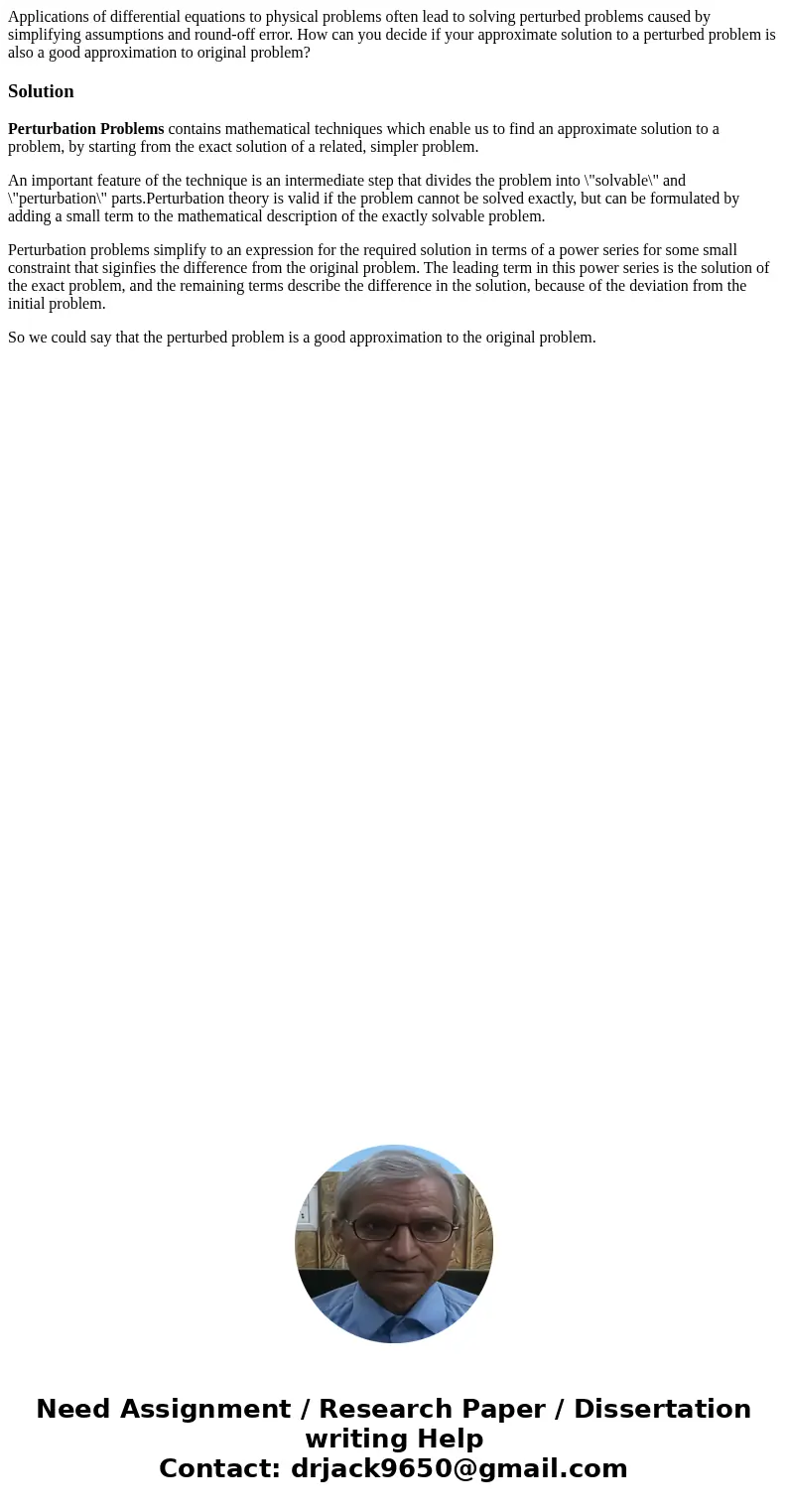Applications of differential equations to physical problems
Applications of differential equations to physical problems often lead to solving perturbed problems caused by simplifying assumptions and round-off error. How can you decide if your approximate solution to a perturbed problem is also a good approximation to original problem?
Solution
Perturbation Problems contains mathematical techniques which enable us to find an approximate solution to a problem, by starting from the exact solution of a related, simpler problem.
An important feature of the technique is an intermediate step that divides the problem into \"solvable\" and \"perturbation\" parts.Perturbation theory is valid if the problem cannot be solved exactly, but can be formulated by adding a small term to the mathematical description of the exactly solvable problem.
Perturbation problems simplify to an expression for the required solution in terms of a power series for some small constraint that siginfies the difference from the original problem. The leading term in this power series is the solution of the exact problem, and the remaining terms describe the difference in the solution, because of the deviation from the initial problem.
So we could say that the perturbed problem is a good approximation to the original problem.

 Homework Sourse
Homework Sourse